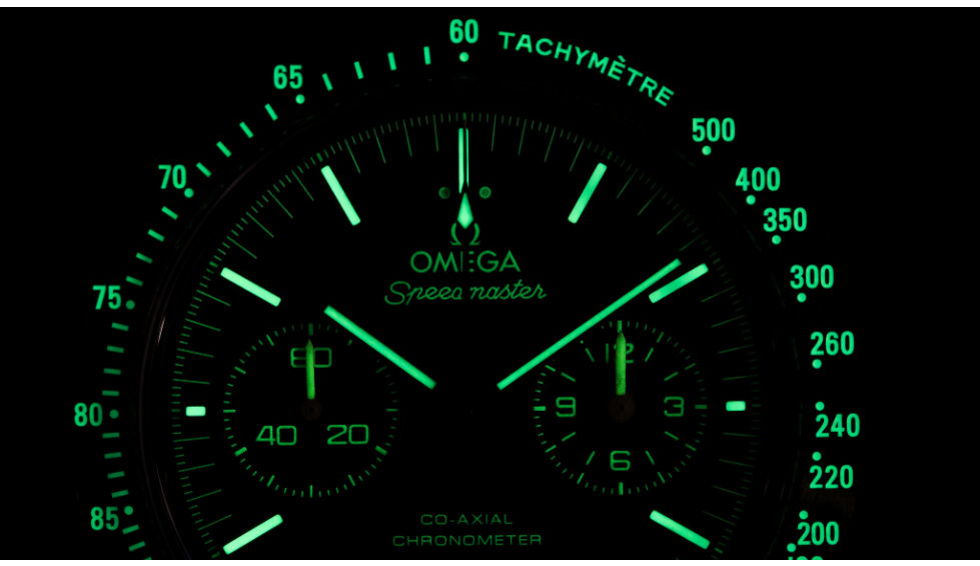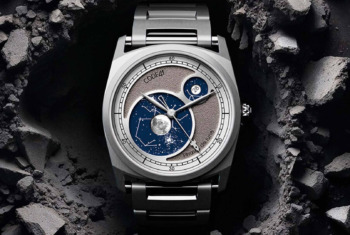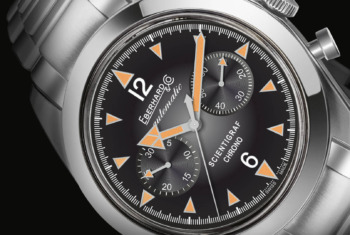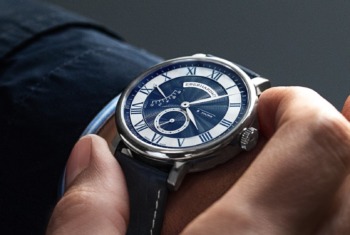
8 FACTS
Even in the darkest of nights, the dial gleams brilliantly. If you want to be able to read your mechanical watch in complete darkness, you find yourself dependent on luminescent hands and indexes. Super-Luminova, an applied flourescent material improves the night perceptibility of watches without using any radioactive energy. Super-Luminova represents the current state of the art. We have compiled 8 facts for you made Luminova and its improved successor, Super-Luminova, into perhaps the most useful innovation in the watch world in recent decades.
1. Super-LumiNova is older than you would think
Luminova replaced tritium as the go-to luminous markers of the Swiss watch industry since 1998. It was quickly succeeded by the improved Super-LumiNova just two years later. Super-LumiNova, or more precisely Super-LumiNova C3, is an improved Luminova with increased brightness. Its effectiveness was readily embraced by the Swiss watchmaking industry and quickly replaced its predecessors and was applied to all luxury watches made in Switzerland. Even fewer people know that Super-LumiNova was actually discovered as far back as the 1960s. At that time, it was considered most useful in cathode ray tubes. Only decades later, the fluorescent qualities of the material found their purpose in the watchmaking industry.
2. Super-LumiNova is not radioactive
In contrast to the previous luminescent materials, Luminova and Super-LumiNova are not radioactive at all. No worries, radium watches do not present any danger, when one wears the watch on a regular basis. However, it is particularly recommendable for you to ask a watchmaker to check the intensity of the radiation in military watches. Even though vintage watches by no means pose an imminent health threat in normal circumstance, it is simply a matter of precaution and to have a peace of mind that you are not carrying radioactive particles on your wrist.

3. Super-LumiNova must charge first to emit light
Radium and tritium have the property to glow for a very long time because of the radioactivity in these substances. You do not need to fuel them with light to reflect that same bright energy back. In contrast to its predecessors, radium and tritium, the Super-LumiNova has to be charged with sufficient light and it glows for a limited period in the dark.
4. Super-LumiNova’s intensity decreases over time
Because you must first charge Super-LumiNova with light, its brightness varies depending on the amount of light that has been stored. As a result, the emission of light is not linear, but its intensity decreases as time passes. Based on the quality of the Super-LumiNova material and the length and intensity of the light source, which the watch was exposed to, the glow time can vary significantly from just a few minutes up to about 15 hours of continuous luminescence.
5. Super-LumiNova stays lit longer than it appears
As the luminosity diminishes over time in a nonlinear fashion, the energy released by Super-LumiNova approaches quasi zero towards the end of the lightcylce and becomes asymptotic to the human eye. Although the glow becomes imperceptible, Super-LumiNova continues to shine below this threshold significantly longer.

6. Super-LumiNova discharges electrically
For those who choose to forego battery-operated watches for the reason of completely avoiding any electromagnetic charge, we need to set the record straight. Super-LumiNova is electrically charged by the light and then discharges this energy in its glow. If you do not wear quartz watches out of conviction, there is some consolation: wherever there are moving parts, some amount of electromagnetism does come into play. In other words, every mechanical watch contains some electric charge.
7. Super-LumiNova can be charged and discharged unlimited times
Unlike batteries, Super-LumiNova can be recharged as often as you want and it shows no wear even after thousands of light cycles. In this respect too, Super-LumiNova differs from radium and tritium, which degrades over time. In tritium watches you may detect a diminishing of its luminosity after just a few years because it has a much shorter half-life than radium.

8. Super-LumiNova is available in a variety of colors
Not all Super-LumiNovas are equal. There is a broad range of bright colors extending from white and yellow/beige to green and blue tones. The spectrum ranges from blue and blue-violet via blue-green to yellow. Even reddish shades can be created. Increasingly popular these days are pale yellow to beige tones, which are reminiscent of the familiar glow of vintage watches and their fluorescent light generated by radium and tritium.









